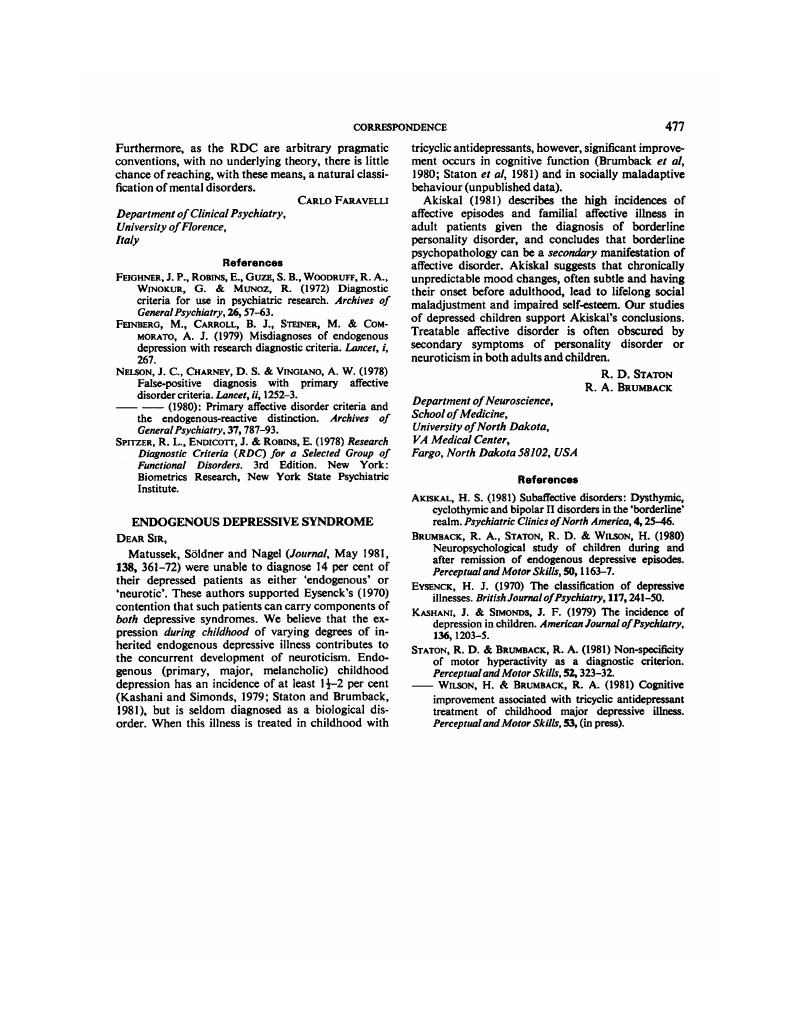No CrossRef data available.
Article contents
Endogenous Depressive Syndrome
Published online by Cambridge University Press: 29 January 2018
Abstract
An abstract is not available for this content so a preview has been provided. As you have access to this content, a full PDF is available via the ‘Save PDF’ action button.

- Type
- Correspondence
- Information
- Copyright
- Copyright © Royal College of Psychiatrists, 1981
References
Akiskal, H. S. (1981) Subaffective disorders: Dysthymic, cyclothymic and bipolar II disorders in the ‘borderline’ realm. Psychiatric Clinics of North America, 4, 25—46.Google Scholar
Brumback, R. A., Staton, R. D. & Wilson, H. (1980) Neuropsychological study of children during and after remission of endogenous depressive episodes. Perceptual and Motor Skills, 50, 1163–7.Google Scholar
Eysenck, H. J. (1970) The classification of depressive illnesses. British Journal of Psychiatry, 117, 241–50.CrossRefGoogle ScholarPubMed
Kashani, J. & Simonds, J. F. (1979) The incidence of depression in children. American Journal of Psychiatry, 136, 1203–5.Google Scholar
Staton, R. D. & Brumback, R. A. (1981) Non-specificity of motor hyperactivity as a diagnostic criterion. Perceptual and Motor Skills, 52, 323–32.Google Scholar
Staton, R. D.
Wilson, H. & Brumback, R. A. (1981) Cognitive improvement associated with tricyclic antidepressant treatment of childhood major depressive illness. Perceptual and Motor Skills, 53, (in press).Google Scholar





eLetters
No eLetters have been published for this article.